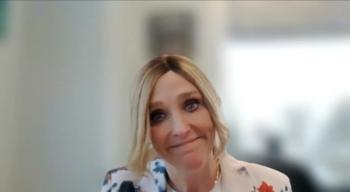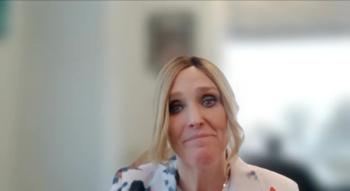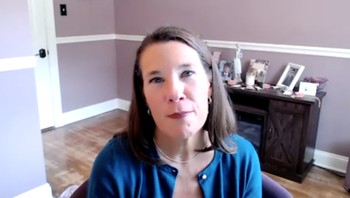
Disadvantages of Videoconferencing for Home Assessments Limit Clinical Feasibility
Occupational therapists and caregivers note that while videoconferencing to conduct home assessments before hospital discharge have significant advantages, the current disadvantages limit the clinical feasibility of virtual home visits.
Writing in
It is necessary for occupational therapists to assess a patient’s home before hospital discharge to provide recommendations that support patient autonomy and safety. However, costs and time limit the amount of home visits made. Standard procedure for home visits involves occupational therapists relying on interviews (self-reported information) with the patient or a caregiver. Researchers aimed to compare the use of mobile videoconferencing for home visits against standard procedure and to evaluate the clinical feasibility of this method.
This concurrent mixed methods feasibility study compared the standard procedure interview home assessment to the videoconferencing home assessment method. First, occupational therapists collected information on the patient’s home environment through an interview with them and made a first draft of their intervention plan. Next, occupational therapists evaluated the home via videoconferencing with a tablet used by a family caregiver and modified their intervention plan as needed.
Participants were recruited from 2 regional hospitals in Quebec, Canada and the study included a total of 8 triads. A triad consisted of an adult patient with loss of functional autonomy due to physical disability, the patient’s caregiver, and the occupational therapist conducting the home assessment. In total, 8 patients, 8 caregivers, and 6 occupational therapists from were included in the study from April 2017 to April 2019.
Practitioner and organization telehealth readiness assessment tools were used to evaluate the occupational therapists’ responsiveness to using telehealth. Additional quantitative data measured was the time spent for each home assessment method. Major events after discharge were collected with the Social Readjustment Rating Questionnaire. The Canadian Professional Performance Measurement assessed patient occupational performance and satisfaction.
Qualitative data was also collected using questionnaires and semi-structured interviews. Occupational therapists and caregivers provided feedback on the use of videoconferencing for home assessments. Occupational therapists’ intervention plan and recommendations were recorded. Interviews with the patients were also conducted.
Intervention plans made after the standard interview for 7 of the 8 patients in the study were modified by their occupational therapists after videoconferencing. Changes in the intervention plans aimed to improve patient autonomy and safety, reduce risk of falling, provide cheaper and simpler solutions, and incorporate new information not learned doing the standard interview.
Overall, some occupational therapists felt that videoconferencing added value to the home assessments, while others did not. Caregivers perceived videoconferencing to be beneficial for providing the occupational therapists with better information as data from interviews could be wrong or incomplete due to negligence on the caretaker’s part. Occupational therapists also noted the ability to asking questions and provide feedback in real time as an advantage of videoconferencing.
Disadvantages of videoconferencing were also noted. One occupational therapist mentioned that videoconferencing does not allow for showing the interactions between patient, environment, and daily activities. Occupational therapists and caregivers listed the stress of taking measurements and using a tablet. The additional time required for videoconferencing was another disadvantage.
There is a clinically relevant difference between patient performance and satisfaction scores during hospital stay and post-discharge. Another clinically relevant finding was that for one patient, the initial plan of going to a seniors’ residence was changed to allow him to return home after the videoconference. Videoconferencing also increased caregiver involvement, also a clinically relevant finding.
Limitations of this study include the small sample size and having one person perform the data analysis. Researchers note the relevancy of documenting occupational therapists’ and caregivers’ comfort level with technology to understand its influence on receptivity and study recruitment. There may have been a bias in occupational therapists recruiting ideal patients for the study. The COVID-19 pandemic started during the study period, which may have influenced results as the general population was forced to learn and improve their technology skills.
“Clinical feasibility issues were found when using mobile videoconferencing to support hospital discharge planning. Although mobile videoconferencing provides multiple benefits, such as more appropriate occupational therapist recommendations, the inconveniences, such as time constraints, make it difficult to perceive the added value of this method,” the researchers concluded.
Reference
Latulippe K, Giroux D, Guay M, et al. Mobile videoconferencing for occupational therapists’ assessments of patients’ home environments prior to hospital discharge: mixed methods feasibility and comparative study. JMIR Aging. 2022;5(3). doi: 10.2196/24376
Newsletter
Stay ahead of policy, cost, and value—subscribe to AJMC for expert insights at the intersection of clinical care and health economics.








































